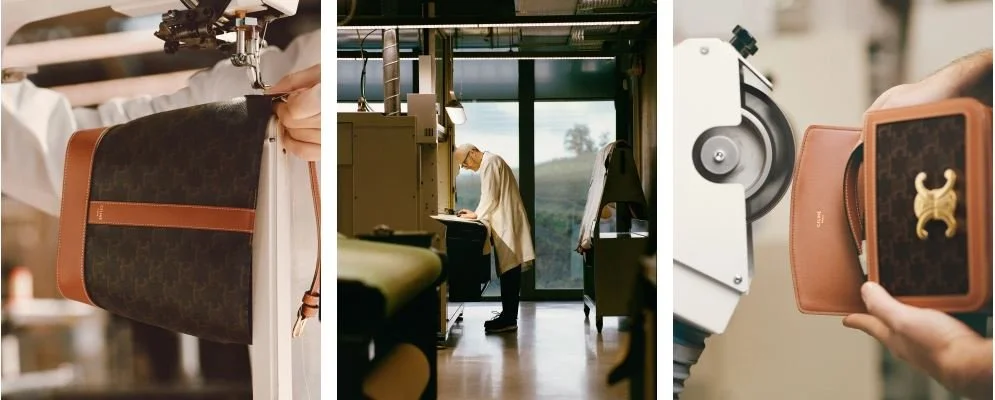Celine’s Italian Atelier and the Fine Art of Savoir Faire
It’s easy to look at a designer bag in a department store window and fail to realize the intricate process and hours of skilled labor that informed its creation. Even finely crafted artisinal goods, like Celine’s leather bags and small goods, can appear so luxurious that we forget they were made by hand.
The fashion house’s recently opened atelier in Radda, Tuscany, offers a view of the expert artisanship that has defined the brand since its inception by Céline Vipiana in the 1960s. Traveling from Paris to Florence, Vipiana pioneered the brand’s very first leather collection. Now, nestled in the rolling hills of Tuscany, generations of highly skilled artisans continue to craft Celine’s leather goods from the finest certified materials, preserving rare techniques passed down through generations.
At the heart of Celine lies an unwavering commitment to craftsmanship and respect for tradition. The brand’s commitment to quality begins with sourcing the finest materials, primarily from partner tanneries across Italy. Each hide is certified by the Leather Working Group (LWG), ensuring traceability and environmental responsibility during the tanning process. Emphasis is placed on full-grain leather, prized for its natural texture, shine and smoothness, which remain beautifully intact during the production process.
Celine’s production facilities in Tuscany employ over 400 expert leather artisans. The process begins with a modelist, who meticulously drafts detailed patterns. These patterns are given to a cutter who reads the hide, carefully studying its structure, resistance and aesthetic qualities to determine where each piece of the bag should be cut. From there, leather artisans shape the pieces using traditional techniques, giving each bag its distinctive form.
A signature element of Celine’s leather goods is the clasp on the iconic Triomphe bag. This emblem dates back to the 1970s, when Céline Vipiana, stranded at the Place de l’Étoile after her car broke down, found inspiration by the chain link encircling the Arc de Triomphe. This design evolved into Celine’s monogram. In 2018, Celine reinterpreted the symbol, naming it the “Triomphe.” While the bag's design has evolved alongside the brand, the focus on thoughtfulness and creativity has remained.
